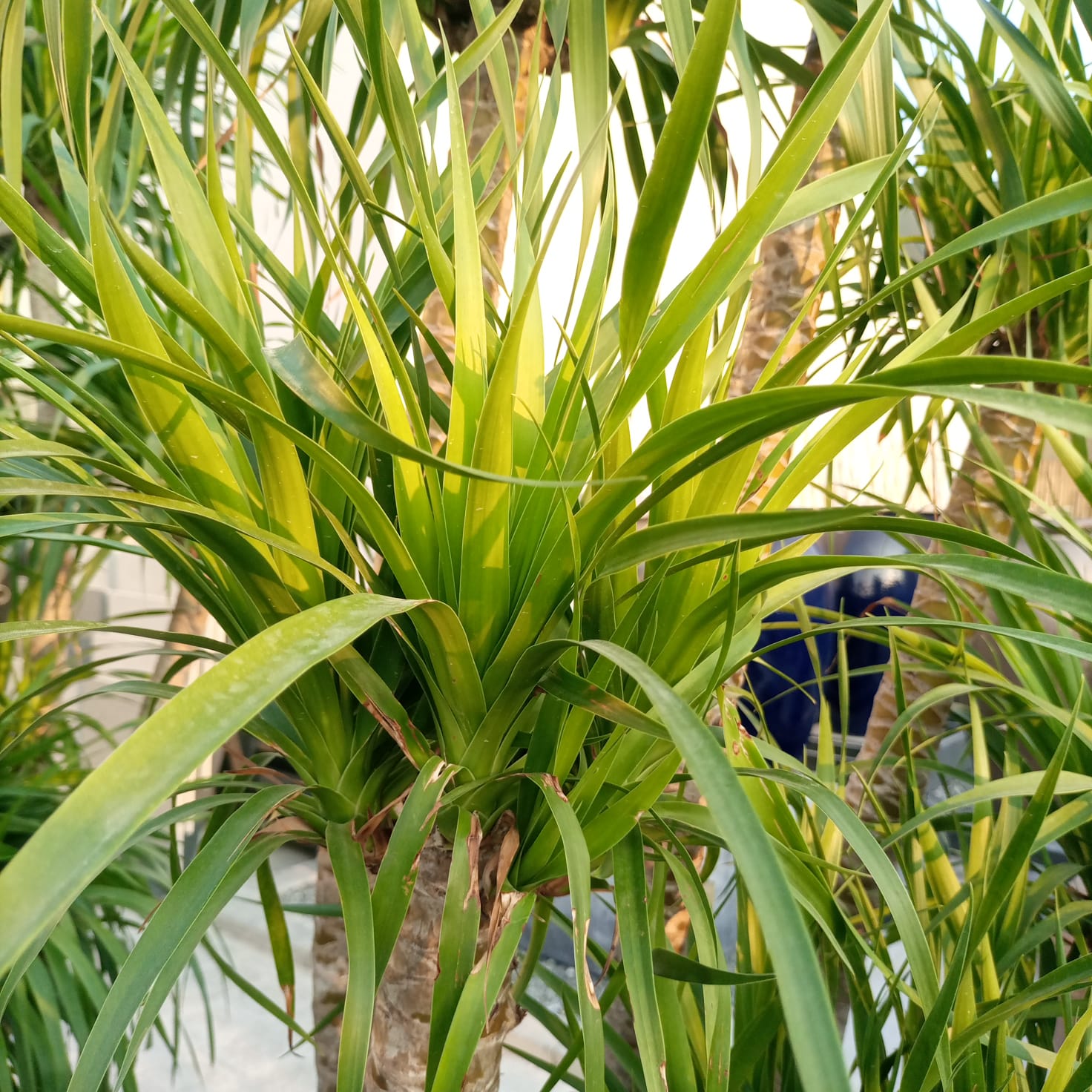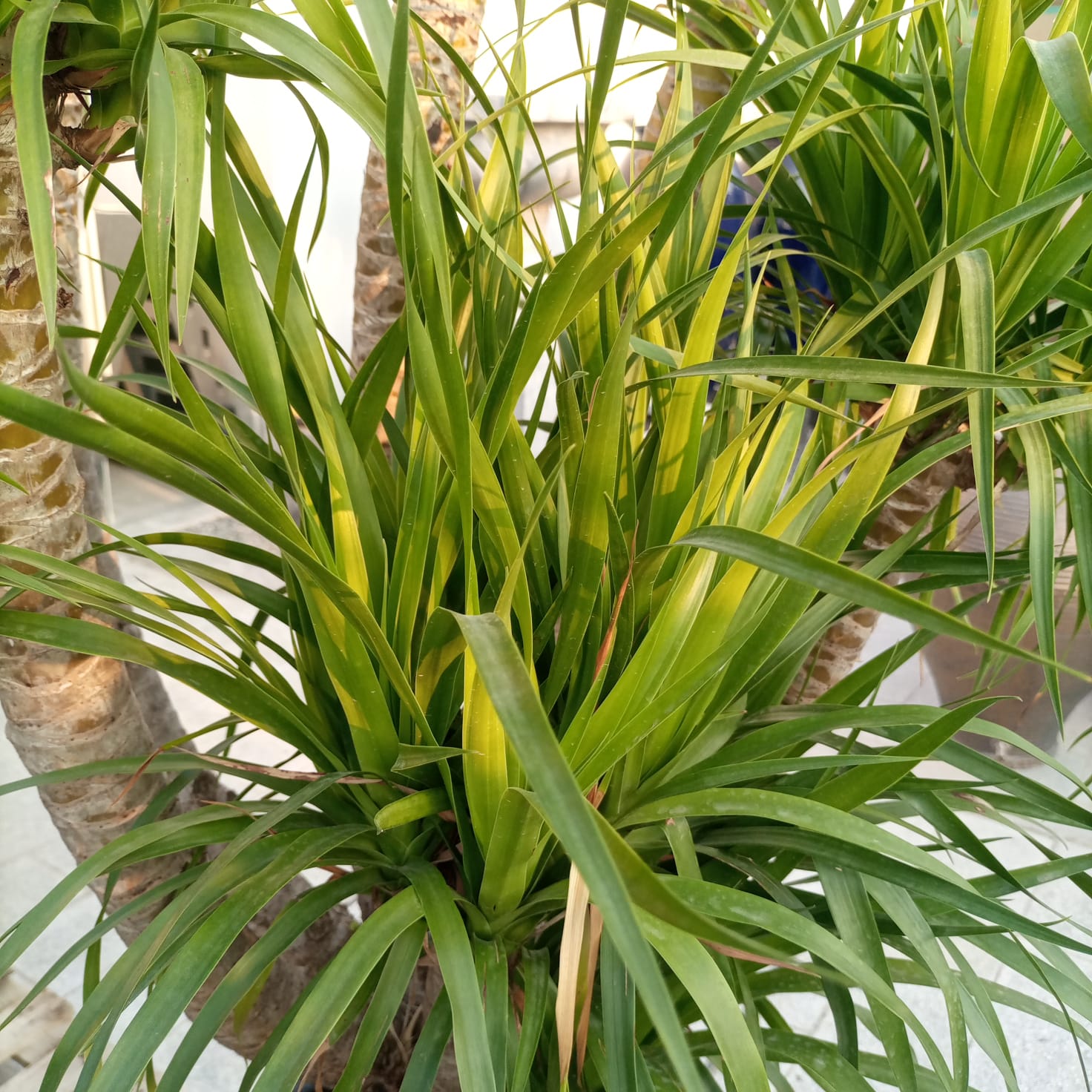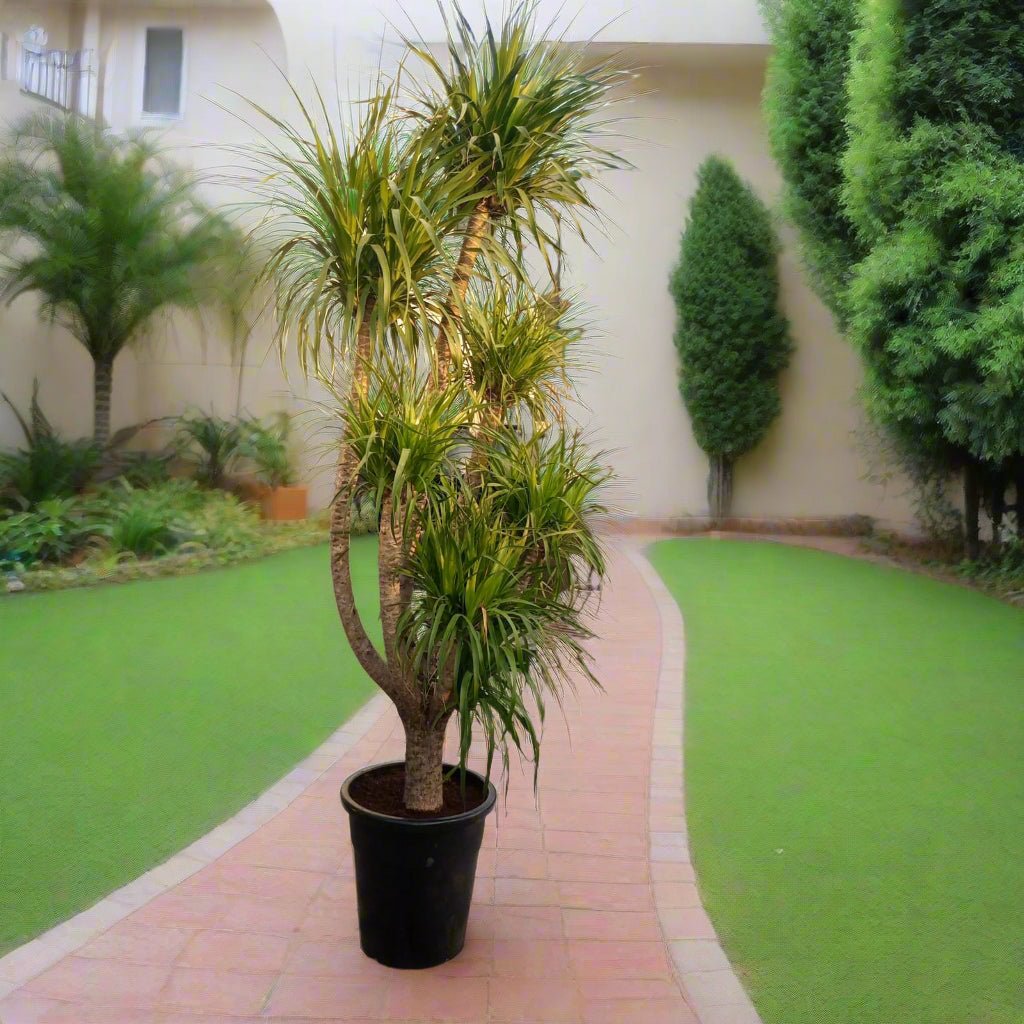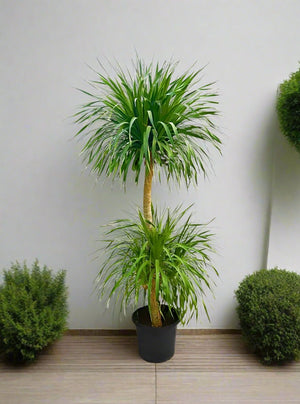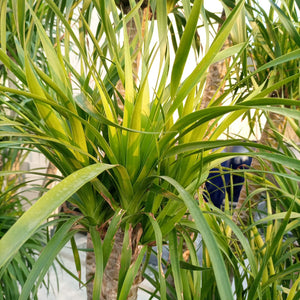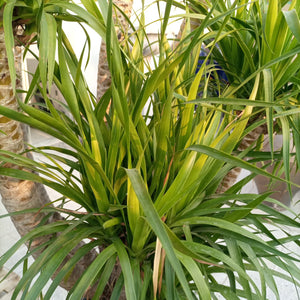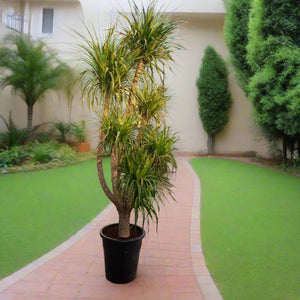Succulent Dracaena Draco (Multihead) | 1.8 - 2.0 m
Guarantee Safe Checkout
Website Exclusive - Free Delivery in Dubai & Sharjah
Free replacement if you receive a defective item during delivery

Succulent Dracaena Draco (Multihead) | 1.8 - 2.0 m
Succulent Dracaena Draco Type H6, Multistem 35LP, 1.8-2.0M
Dracaena draco, commonly known as the Dragon Tree, is a distinctive, slow-growing evergreen tree known for its unique appearance and historical significance. It is native to the Canary Islands, Madeira, Cape Verde, and parts of Morocco. This tree is prized for its thick trunk, spiky rosettes of leaves, and striking, dragon-like form, and it is often cultivated as an ornamental plant.
Here are key details about Dracaena draco:
1. Appearance:
Size: Dracaena draco is a slow-growing tree that can reach 10 to 20 feet (3–6 meters) in height when grown outdoors, although it will remain smaller in containers. It typically has a single, thick trunk, which becomes more branching as it ages.
Trunk: The trunk of the Dragon Tree is thick and woody, with a somewhat swollen base, and it can develop a gnarled, tree-like appearance as it matures. It has a rough texture with prominent scars from old leaf bases.
Leaves: The leaves of Dracaena draco are long, sword-shaped, and dark green to bluish-green, growing in dense rosettes at the tips of the branches. The leaves can grow up to 2 feet (60 cm) long and are leathery to the touch.
Flowers: Dracaena draco can produce small, white or creamy flowers, clustered in large, fragrant panicles. These flowers bloom typically in spring or summer and are not very showy but are attractive to pollinators like bees.
Dragon's Blood Resin: The tree is famous for its red resin, often called "dragon's blood", which can be harvested from the trunk. This resin has been historically used in dyes, incense, and traditional medicine.
2. Uses:
Ornamental: Dracaena draco is primarily grown as an ornamental tree in gardens, landscapes, or as an indoor plant in containers. Its dramatic form and spiky leaves make it a striking focal point.
Indoor Plant: While it can be grown outdoors in tropical or subtropical climates, Dracaena draco is often cultivated indoors as a large potted plant, particularly in bright, sunny spots or conservatories.
Cultural and Medicinal Uses: The resin, known as dragon's blood, has been used for various purposes, including incense, traditional dyes, and in herbal medicine. It has historical significance in various cultures.
3. Cultivation:
Climate: Dracaena draco thrives in tropical and subtropical climates, suited for USDA hardiness zones 9-11. It can handle mild winters but is not frost-tolerant, so it should be protected from freezing temperatures. In colder regions, it can be grown in pots and brought indoors during winter.
Light: It prefers bright, indirect light, though it can tolerate some direct sunlight. Too much direct sun in very hot climates can scorch its leaves, so a bit of afternoon shade may be beneficial.
Soil: Dracaena draco requires well-draining soil with a slightly acidic to neutral pH. A cactus or succulent mix works well for this plant. Proper drainage is crucial to prevent root rot.
Watering: Dracaena draco is drought-tolerant once established. Water the tree thoroughly when the soil is dry, but ensure the soil does not stay soggy. Water less frequently during the winter months when the plant is not actively growing.
Temperature: It grows best in warm temperatures between 65–85°F (18–29°C). Protect the plant from frost, as freezing temperatures can severely damage or kill it.
4. Maintenance:
Pruning: Dracaena draco is relatively low-maintenance when it comes to pruning. You can remove dead or damaged leaves to keep it looking tidy. If the plant becomes too large or top-heavy, you can trim the top to encourage branching.
Repotting: This tree has a slow growth rate, so it does not need frequent repotting. Repot it every 2-3 years or when it outgrows its container. Choose a container that is one size larger than the current one to avoid excess moisture retention.
Fertilizing: Dracaena draco does not require much fertilizer. You can feed it once a year with a slow-release, balanced fertilizer during the growing season. Avoid fertilizing during the dormant winter months.
5. Propagation:
Offsets (Pups): Dracaena draco produces offsets or "pups" at the base of the plant, which can be separated and repotted. These pups are small shoots that can be carefully removed from the main plant and planted in their own pots.
Stem Cuttings: You can also propagate Dracaena draco from stem cuttings, though this method is less common. Take a cutting with a rosette of leaves, allow it to callus for a few days, and then plant it in well-draining soil.
6. Common Problems:
Overwatering: One of the most common problems with Dracaena draco is overwatering, which can lead to root rot. Ensure the plant is in well-draining soil and only water when the soil is dry. Avoid letting the plant sit in water.
Pests: While Dracaena draco is relatively pest-resistant, it can occasionally be affected by mealybugs, scale insects, or spider mites. These can be treated with insecticidal soap or neem oil.
Leaf Yellowing: Yellowing leaves can indicate overwatering, poor drainage, or a lack of light. Ensure the plant is getting enough light and that you are not watering too frequently.
7. Other Characteristics:
Slow Growth: Dracaena draco is a slow-growing plant. It can take years to reach significant height, but over time, it will develop a majestic, tree-like appearance.
Toxicity: Dracaena draco is non-toxic to humans and pets, making it a safe option for households with children and animals.
8. Cultural Significance:
Dragon’s Blood Resin: The red resin produced by the tree, known as "dragon's blood," has been historically used in incense, dying fabrics, and herbal medicine. It is often associated with mystical and magical properties in folklore.
| Size |
35 Litre Pot, 45 Litre Pot |
|---|
